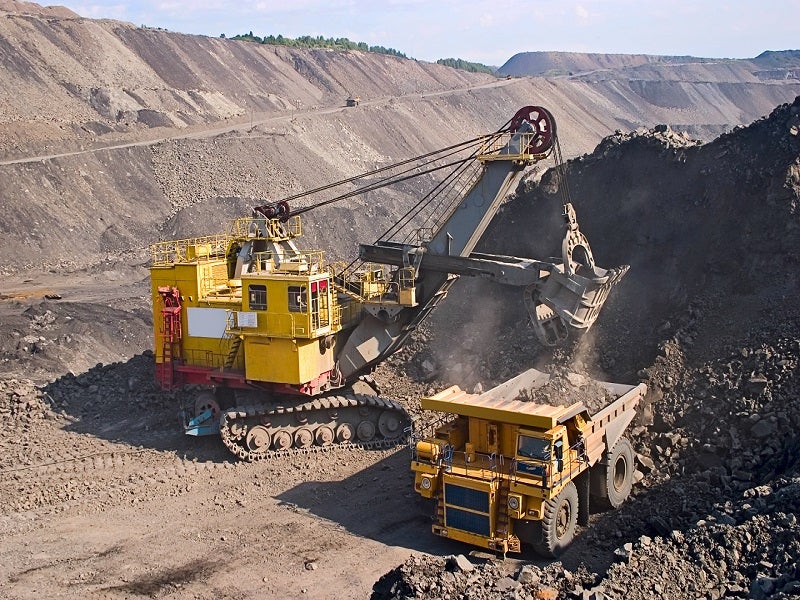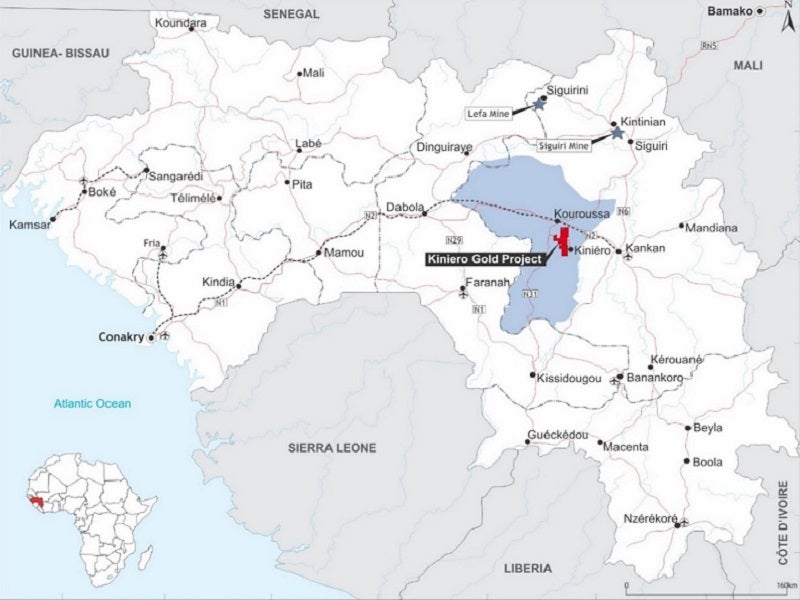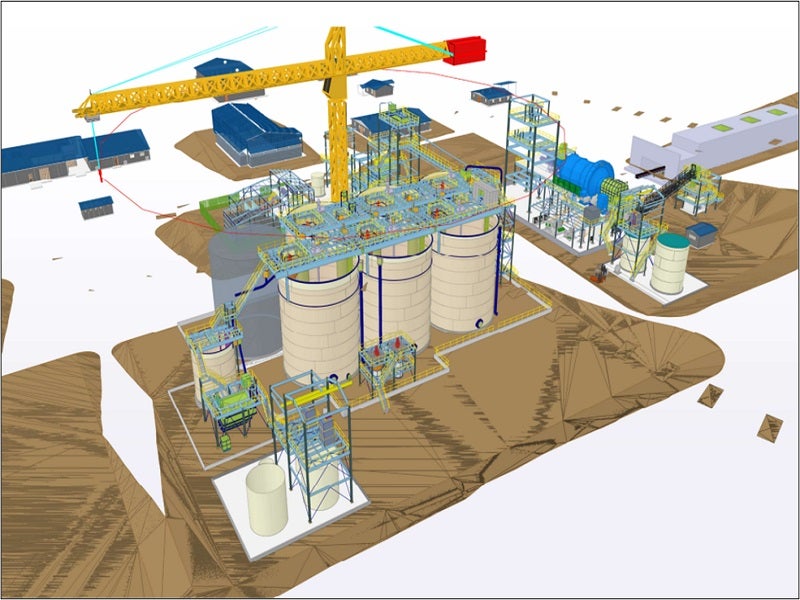The Kiniero gold project involves restarting open-pit mining operations at the historic Kiniero gold mine in the Republic of Guinea, West Africa. The brownfield project is being developed by Canadian mining company Robex Resources.
A pre-feasibility study (PFS) for the project was completed in August 2022, followed by a feasibility study (FS) completed in June 2023. The FS highlighted an average annual production of 90 thousand ounces (koz) of gold over a mine life of mine of nine and a half years with an initial capital investment of $160m.
Production from the historic Kiniero open-pit mine was started by Canada-based gold miner Semafo through its subsidiary Semafo Guinée in 2002. The mine produced 418koz of gold during its 12-year operational history until it was put under care and maintenance in early 2014.
Sycamore Mining acquired the property in 2019. Robex Resources became the owner and developer of the project through its merger with Sycamore Mining in April 2022.
Construction of the project started in the fourth quarter of 2022, with the first gold pour expected in mid-2024.
The Kiniero gold project location
The Kiniero gold project is located 5km northwest of Kiniero town in the Kouroussa Prefecture, in the Kankan region of Guinea.
The project represents one of the largest gold licences in Guinea. It comprises a 470km² exploitation and exploration land package including the adjoining Kiniero and Mansounia license areas.
Geology and mineralisation at the gold project
The Kiniero gold project lies within the Siguiri Basin in the Birimian Greenstone Belt of West Africa. The geology of the project area is characterised by volcanic and sedimentary lithologies comprising fine-grained sedimentary rocks and intrusive volcanic rocks in greenschist facies.
Gold mineralisation at Kiniero is hosted in shear zones and is typically associated with late-orogenic and structurally controlled medium-grade lodes occurring within quartz veins or in quartz-veined fracture zones with inter-mineralisation intrusives.
The property is divided into five clusters of gold deposits, namely Sabali, Mansounia, SGA, Jean and Balan. The Kiniero gold project is currently focused on developing the SGA, Jean, SGD and Sabali clusters.
Gold reserves at Kiniero
The Kiniero gold project was estimated to hold 27.67m tonnes (Mt) of probable mineral reserves grading 1.09 grams per tonne of gold, as of June 2023.
Mining and processing at the gold project
Kiniero will be developed as a contractor-operated, conventional open-pit mining operation with a waste-to-ore strip ratio of 2.8:1.
Open pits will be developed at the SGA, Jean, SGD and Sabali South, North and Central deposits. Mining will be carried out on 5m benches and 2.5m flitches using Komatsu PC1250 excavators supported by a fleet of 55t Volvo A60H haul trucks.
The Kiniero processing plant will have the capacity to treat 3Mt of ore a year.
The run-of-mine ore will undergo crushing in a primary jaw crusher and grinding in a semi-autogenous grinding mill. The ground ore will be fed to the cyclone feed pump box. The hydrocyclone underflow will be fed to the gravity circuit where the undersized ore will gravitate to the gravity concentrator.
The slurry will be thickened and introduced to the carbon-in-leach (CIL) circuit. Gold particles adsorbed onto activated carbon within the CIL circuit will undergo elution in a pressurised Zadra elution circuit.
The gold particles will be desorbed from the activated carbon columns in an electrowinning circuit. The recovered gold particles will be melted and purified in the gold room furnace and poured into moulds to produce the final gold dore bars.
The project site infrastructure
The mine site is accessible from the Balan-Kiniero regional road. The existing 1.3km access road will be refurbished and upgraded, with new roads planned to be built to access the Sabali and Mansounia mining areas.
The power needed for the project will be sourced from a hybrid facility comprising diesel generators of 13MW capacity, an 18MW solar photovoltaic plant and a 6MWh/12MW battery storage system.
Process water will be recirculated from the tailings storage facility, with raw water planned to be extracted from the existing mining pit lakes and boreholes and then stored in the freshwater tank.
Contractors involved in the Kiniero gold project
Australian mining services provider Mining Plus prepared the PFS for the Kiniero gold project. AMC Mining Consultants provided mining operating cost estimates and reviewed the feasibility study results.
ABS Africa provided environmental, social and governance (ESG) consultancy services for the project.
Mine Planning Solutions provided the mine planning and mineral reserve estimates.
Epoch Resources provided the tailings storage facility design, while GeoStratum and TREM Engineering were engaged to conduct geohydrological and geotechnical studies for the project.
Canada-based mineral processing consultant Soutex was engaged to undertake the detailed process plant design and provide processing cost estimates.
Vivo Energy will build the hybrid power plant and serve as an independent power producer for the Kiniero gold project.






